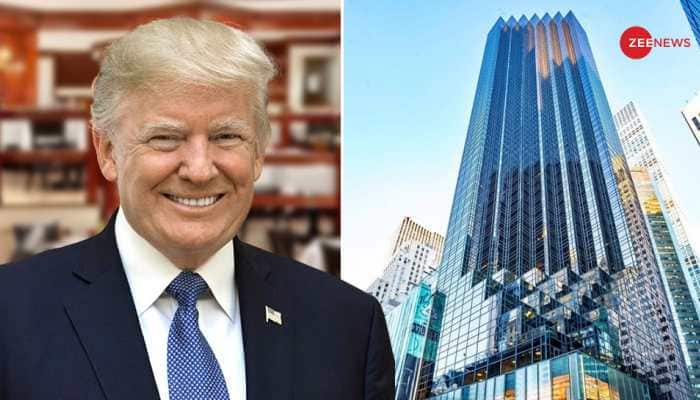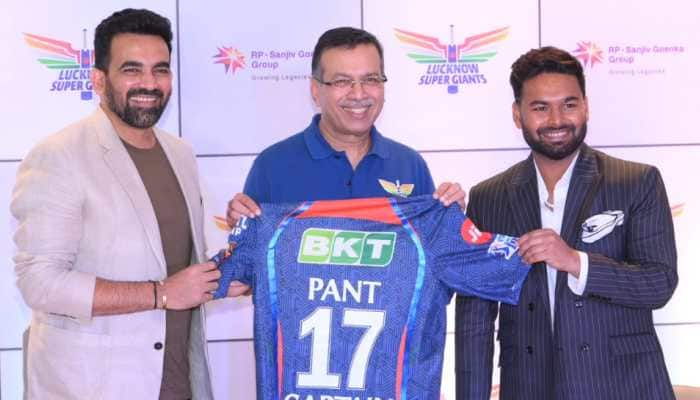Chandrayaan-3 Scripts History: Meet ISRO Chief S Somanath, The Man Behind India's Historic Moon Mission
ISRO's Chandrayaan-3 touched down on the lunar south pole on Wednesday, making India the first country to land on the moon's uncharted territory.
Trending Photos
New Delhi: India on Wednesday scripted history by becoming the first country in the world to reach the uncharted territory of the Moon. The Indian Space Research Organisation's spacecraft Chandrayaan-3 touched down on the lunar south pole at 6.04 pm, making India the first country to land on the Moon's unexplored surface. With this 'monumental moment', India also became the fourth country to master the technology of soft-landing on the Moon after the United States, China and the erstwhile Soviet Union.
Chandrayaan-3: S Somanath played key role in India's moon mission
One of the key functionaries in the Chandrayaan-3 mission is ISRO chief S Somanath. The 60-year-old guided the Chandrayaan-3 team, which had Dr P Veeramuthuvel as Project Director, K Kalpana as Associate Project Director, and M Srikanth as Mission Operations Director.
Chandrayaan-3 Mission:
Updates:
The communication link is established between the Ch-3 Lander and MOX-ISTRAC, Bengaluru.
Here are the images from the Lander Horizontal Velocity Camera taken during the descent. #Chandrayaan_3#Ch3 pic.twitter.com/ctjpxZmbom — ISRO (@isro) August 23, 2023
Born in July 1963 in Kerala's Thuravoor Thekku, Somanath has a B.Tech degree in Mechanical Engineering. He has also obtained a Master's degree in Aerospace Engineering from the Indian Institute of Science, Bengaluru, Karnataka, specializing in Structures, Dynamics, and Control.
He joined the Vikram Sarabhai Space Centre (VSSC), which is the lead centre of ISRO responsible for the design and development of launch vehicle technology, in 1985. He was also a team leader for the Integration of Polar Satellite Launch Vehicle (PSLV), which is the 'Workhorse' of ISRO, during the early phases.
ALSO READ | Chandrayaan-3 Lands On Moon: PM Modi Calls ISRO Chief, Says 'Aapka Toh Naam Bhi 'Somnath' Hai'
Before becoming the ISRO head in 2022, Somanath served as the Director of the VSSC for four years. He also served as the Director of the Liquid Propulsion Systems Centre (LPSC) in Kerala's Valiamala for two and half years.
Somanath is an expert in the area of system engineering of launch vehicles. His contributions to PSLV and GSLV MkIII were in their overall architecture, propulsion stages design, structural and structural dynamics designs, separation systems, vehicle integration, and integration procedures development.
Chandrayaan-3: ISRO chief S Somanath has received 'Space Gold Medal'
ISRO Chief S Somanath is the recipient of the 'Space Gold Medal' from the Astronautical Society of India. He has also received the 'Merit Award' and 'Performance Excellence Award' from ISRO and a 'Team Excellence Award' for GSLV Mk-III development.
He is a fellow of the Indian National Academy of Engineering (INAE), a fellow of the Aeronautical Society of India (AeSI), the Astronautical Society of India (ASI), and a corresponding member of the International Academy of Astronautics (IAA).
Somanath is also in the bureau of the International Astronautical Federation (IAF) and a recipient of the National Aeronautics Prize from the ASI.
He has published papers in journals and seminars in structural dynamics and control, dynamic analysis of separation mechanisms, vibration & acoustic testing, launch vehicle design, and launch services management.
Chandrayaan-3 mission objectives
The Chandrayaan-3 mission objectives are to demonstrate a safe and soft landing on the lunar surface, to demonstrate rover roving on the Moon, and to conduct in-situ scientific experiments.
If everything goes according to the plan, India will become the fourth country in the world after the United States, Russia, and China, to land on the moon, and will be the only nation to touch the lunar south pole.
Chandrayaan-3 Mission:
viewed by
Lander Imager (LI) Camera
on the day of the launch
&
imaged by
Lander Horizontal Velocity Camera (LHVC)
a day after the Lunar Orbit Insertion
LI & LHV cameras are developed by SAC & LEOS, respectively https://t.co/tKlKjieQJS… pic.twitter.com/6QISmdsdRS — ISRO (@isro) August 10, 2023
It is notable that ISRO's Chandrayaan-3 is a follow-on mission to Chandrayaan-2 to demonstrate end-to-end capability in safe landing and roving on the lunar surface.
The lunar south pole is of particular interest as the permanently shadowed polar craters may contain water. The frozen water in the rocks could be transformed by future explorers into air and rocket fuel.
Stay informed on all the latest news, real-time breaking news updates, and follow all the important headlines in india news and world News on Zee News.
Live Tv







)
)
)
)
)
)
)
)
)
)
